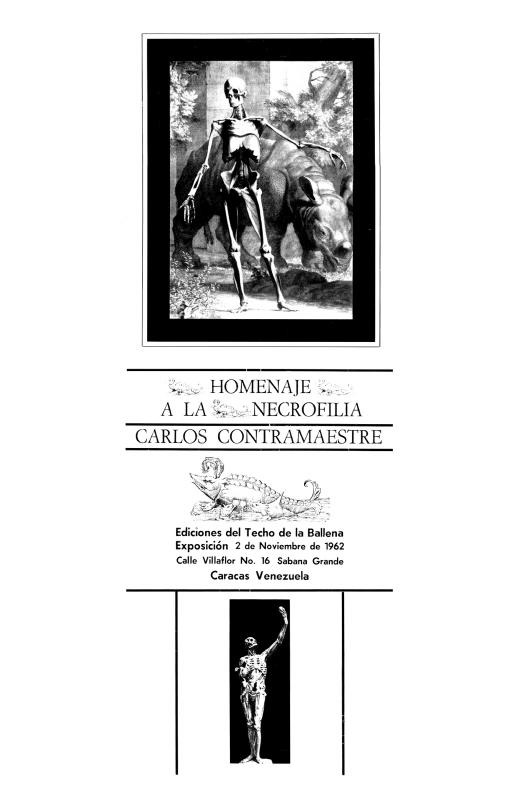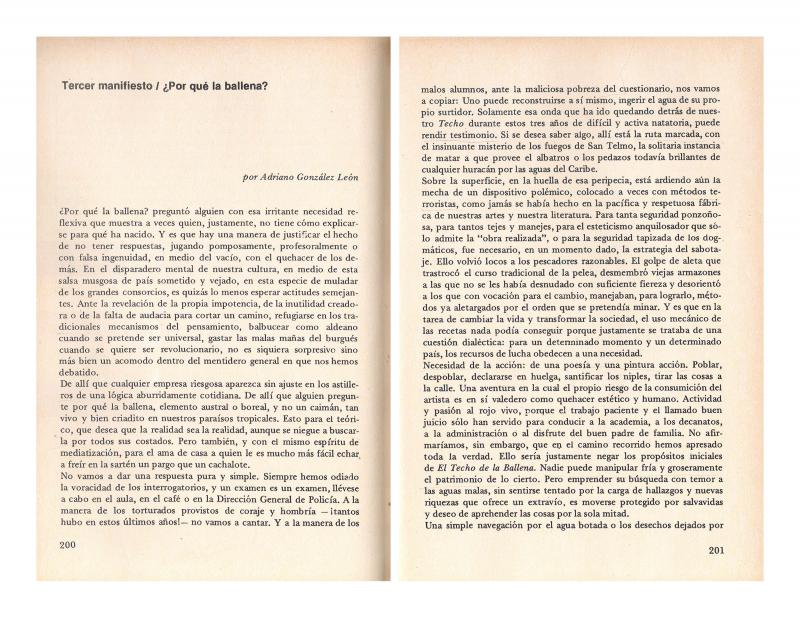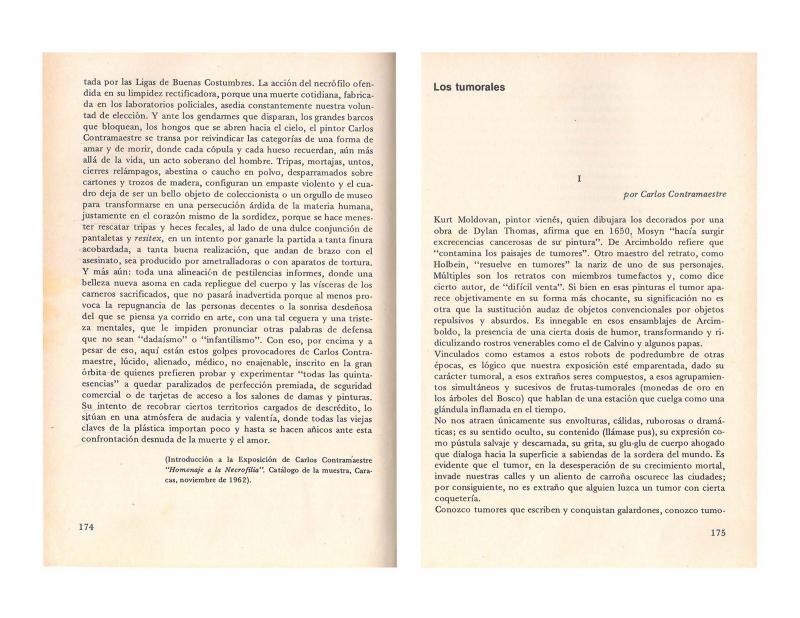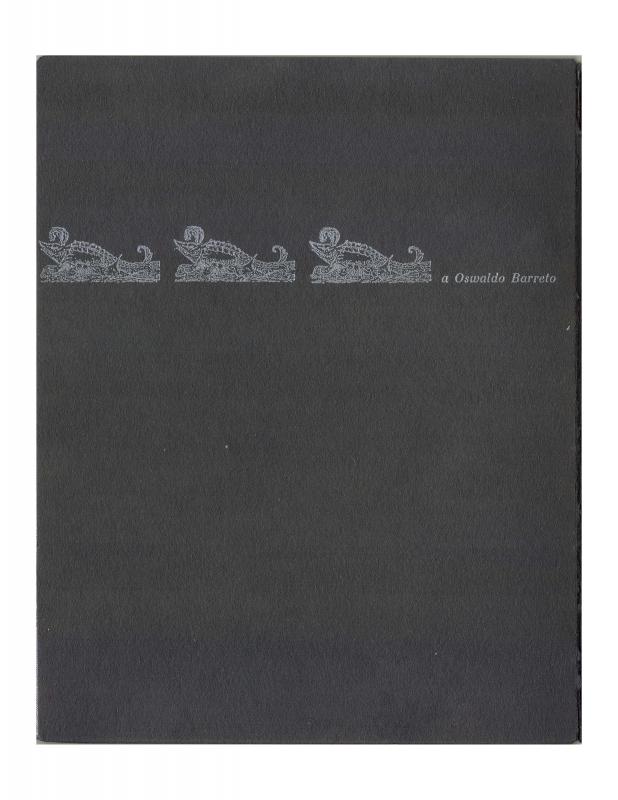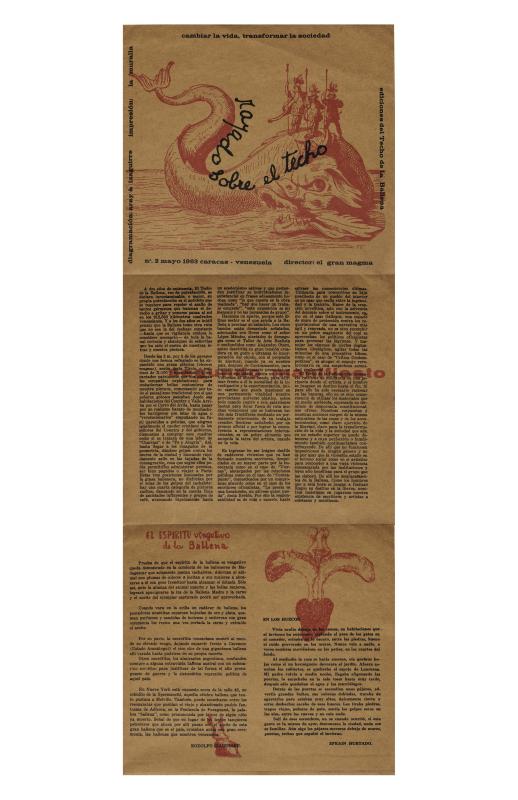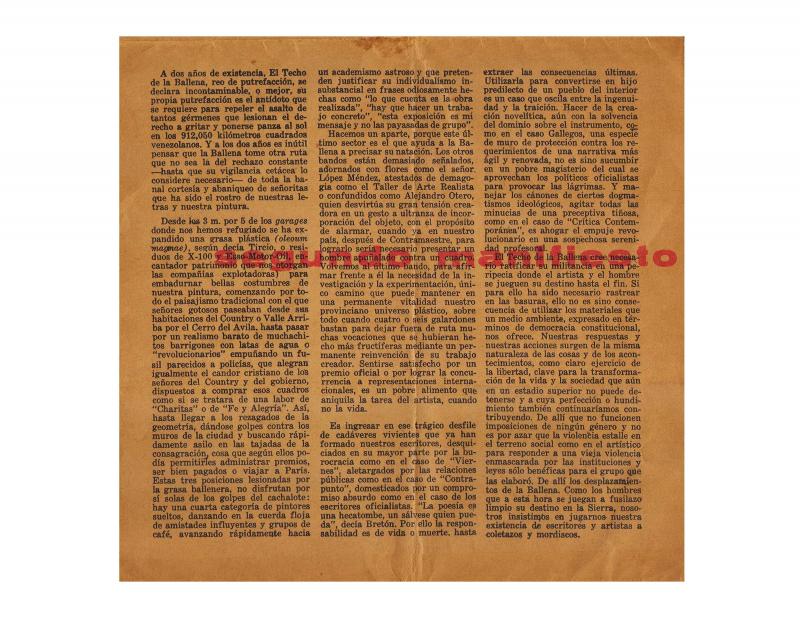El Techo de la Ballena was a group of visual artists and writers from the Venezuelan avant-garde who (from 1961 until 1968) combined a range of different disciplines—visual art, poetry, photography, film, and action art, among others—to create a revolutionary form of art that, in their opinion, challenged and contradicted every traditional socio-cultural value during the decade of greatest political violence that Venezuela had ever experienced. The group saw themselves as the artistic expression of that chaotic period, and viewed guerrilla warfare, intellectual leftist ideas, repression, and cities devastated by the forced and accelerated developmental model of the country’s nascent democracy during the presidency of Rómulo Betancourt (1959–64) as their frame of reference. The visual artists in the group embraced informalism as their aesthetic, to which they added a potent shot of aggressiveness to counter the values of geometric abstraction, traditional landscape painting, and even social realism, and adopted a strategy that was subversive, provocative, irrational, and surrealistic. The group produced numerous publications—including the three issues of the magazine Rayado sobre el Techo—and exhibitions. Members of the group included the Venezuelans Carlos Contramaestre, Juan Calzadilla, Caupolicán Ovalles, Edmundo Aray, Francisco Pérez Perdomo, Salvador Garmendia, Adriano González León, Fernando Irazábal, Daniel González, Gabriel Morera, Gonzalo Castellanos, and Perán Erminy, as well as artists from other countries who were living in Venezuela at the time, such as the Chilean Dámaso Ogaz and the Spaniards J. M. Cruxent, Ángel Luque, and Antonio Moya.
This article-manifesto was published in the Caracas newspaper La Esfera, together with the announcement of the creation of El Techo de la Ballena and the opening of their first exhibition a day earlier, on March 24, 1961. It is considered one of the group’s founding documents, and includes articles such as “El gran magma” and “Para la restitución del magma,” that appeared in the first issue of the magazine Rayado sobre el Techo. In this article the group emphatically disputes early criticism accusing them of imitating (old and clichéd) European Dadaism and Surrealism. The criticism (or observation) was not far wrong since the group’s essays and works betray the same subversive spirit and language that was typical of both those movements. This evidence notwithstanding, they argued that Surrealism’s methods were not an end in themselves; for the group, however, they were their fundamental strategy for achieving their goals, chief among which was described as injecting a “shot of vitality” into Venezuelan culture. Years later the group admitted that influence (among others) in their Third Manifesto (1964), published in their magazine Rayado sobre el Techo Nº 3.
[To read other articles written by members of El Techo de la Ballena, see in the ICAA digital archive by Adriano González León “Homenaje a la necrofilia” (doc. no. 1097543), his introduction to Carlos Contramaestre’s work at the exhibition Homenaje a la necrofilia, 1962; also by González León “Tercer manifiesto: ¿Por qué la ballena?” (doc. no. 1097576); by Juan Calzadilla and Contramaestre “Los tumorales I y II” (doc. no. 1097559), in which they introduce the latter’s exhibition Los Tumorales, in 1963; by Francisco Pérez Perdomo (untitled) “[Hay ciertos rostros de la ciudad…]” (doc. no. 1060288); and by Ángel Rama the prologue known as “Terrorismo en las artes” (doc. no. 1097527). See also by El Techo de la Ballena (untitled) “[Establecer una frontera entre lo cursi y lo pavoso…]” (doc. no. 1059586); “Para la restitución del magma” (doc. no. 1060710); Rayado sobre el techo. Cambiar la vida, transformar la sociedad (doc. no. 1060254); and “Segundo Manifiesto” (doc. no. 1057677)].

